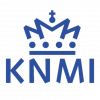Lagrangian Coherent Structures in High-Frequency Satellite Winds of an Atmospheric Kármán Vortex Street
Cloud-motion winds derived from ABI imagery hold great potential for the study of unsteady geophysical flows, because their high temporal and spatial resolution enables the application of analysis techniques that are well-known in dynamical systems theory, but which have largely been overlooked in applied meteorology. We demonstrate such advanced analysis and visualization methods through the example of an atmospheric Kármán vortex street observed in Guadalupe’s wake. Our input wind dataset was extracted from GOES-16 imagery and comprises 2.5-km cloud-motion winds sampled every 5 minutes over an 8-hr period.
The analysis of time-dependent dynamical systems and fluid flows is quite challenging, since many feature definitions are reference frame dependent. In this work, we extract two classes of Lagrangian Coherent Structures (LCS) from observational cloud motion data. First, we locate material lines, that is temporally-coherent sets of particles with exceptional properties, along which the normal separation is maximized over time. These extremal lines are known as hyperbolic LCS, which can be approximated through the finite-time Lyapunov exponent (FTLE). The FTLE estimates the maximal expansion rate of a virtual sphere in a dynamical system, which is extremal along material boundaries. Depending on whether the expansion is measured in forward-time or backward-time, this gives rise to repellors or attractors in the flow. Such material boundaries are of great significance in Lagrangian transport analysis, since they divide the domain into compartments of coherent flow behavior that order the flow. For instance, they separate vortices from each other. In observational data, vortex detection algorithms are often sensitive to noise. By taking a Lagrangian perspective, we integrate the instantaneous vorticity deviation along particle trajectories, which gives rise to elliptic Lagrangian Coherent Structures. Similar to the aforementioned LCS, this approach is invariant to rotations and translations of the frame of reference. Due to the relativity between observer and the observed feature, this formally guarantees that translating and rotating flow structures can be faithfully extracted.






